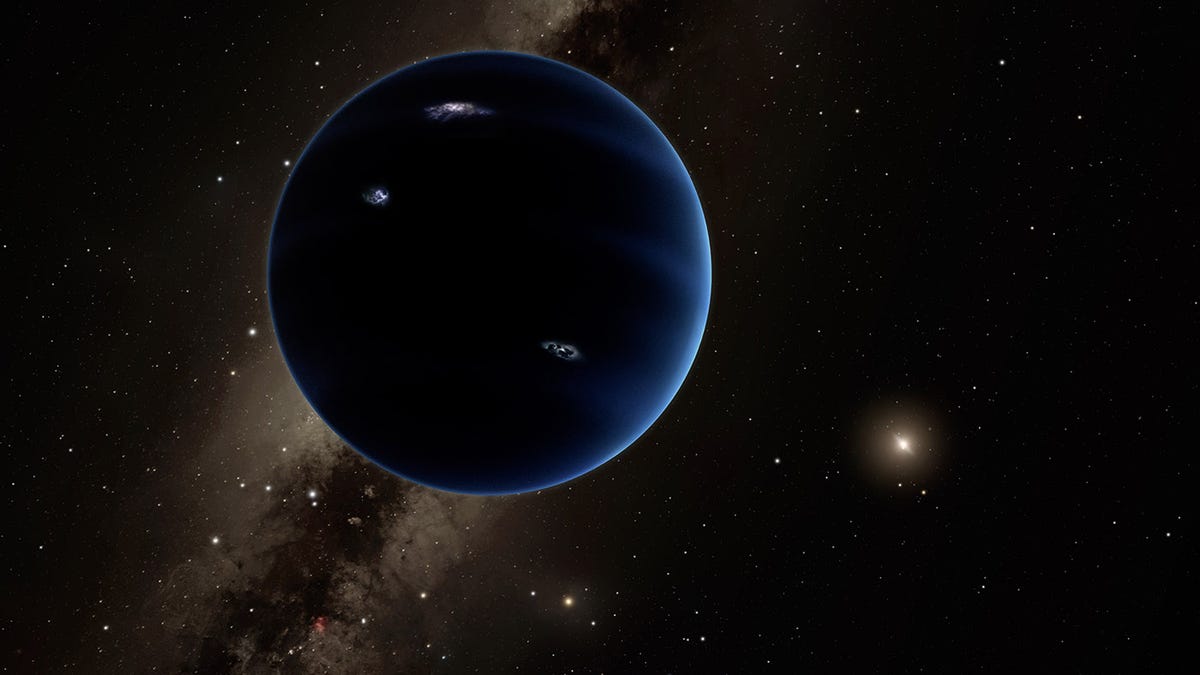Search for elusive Planet 9 gets a crowdsourcing boost
It seems to be lurking far beyond Pluto. Major efforts are now underway to find it thanks in part to citizen science platform Zooniverse and the BBC.

An artist's rendition of Planet 9.
Both professional and amateur astronomers are looking to the edge of our solar system as part of an intensifying search for a hidden ninth planet. And this week, citizen science platform Zooniverse teamed up with the BBC to crowdsource the search.
In just three days, thousands of volunteers worldwide managed to plow through all available images from the SkyMapper telescope at Australia's Siding Spring Observatory and classify over 4 million objects in space.
That massive process of elimination has allowed astronomers from the Australian National University (ANU) to focus on four unknown objects that might be the still hypothetical "Planet 9," which is believed to be about 10 times more massive than Earth.
"With the help of tens of thousands of dedicated volunteers sifting through hundreds of thousands of images taken by SkyMapper, we have achieved four years of scientific analysis in under three days," ANU lead researcher Brad Tucker said in a statement.
Scientists have noted that something seems a little off around the Kuiper Belt, where Pluto and a bunch of other small objects hang out, as if the gravity of a large, unseen distant planet is tugging at them. It's kind of like we've "felt" the presence of the so-called Planet 9, orbiting perhaps 10 times farther out than Pluto. We just haven't spotted the body itself just yet.
Our chances of finally seeing Planet 9 should improve significantly next year when NASA's long-awaited James Webb Space Telescope (JWST) launches.
JWST will have a mirror almost three times the size of the Hubble Space Telescope, which is often credited with revolutionizing our understanding of the universe.
"The Webb telescope will make it possible to observe many objects that are too small, too distant or too faint for ground-based instruments," said John Stansberry at the Space Telescope Science Institute in Baltimore.
JWST could be powerful enough to see almost 13 billion light-years away, perhaps glimpsing light from the Big Bang. If it works that well, then providing a glimpse of a super-Earth hanging out at the frontiers of the solar system could be among the new telescope's first targets for 2018.
Solving for XX: The industry seeks to overcome outdated ideas about "women in tech."
Crowd Control: A crowdsourced science fiction novel written by CNET readers.

